Can You Eat a Cashew Fruit? If you are not sure and want to find out the answer with all the details, then this article is for you!
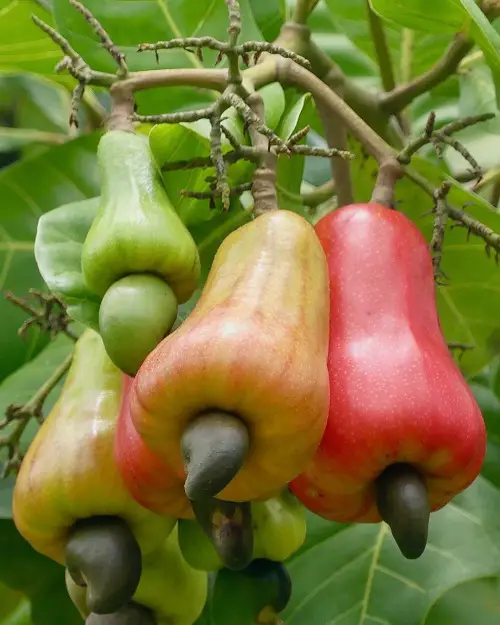
Can You Eat a Cashew Fruit? Have you asked this question before? In this article, you will explore the different aspects of cashew fruit, its nutritional value, and whether it is safe to consume.
Find Where Cashews Come From here
What is a Cashew Fruit?
The cashew fruit, also popular as the cashew apple, is a tropical fruit that belongs to the Anacardiaceae palm tree species. Although native to Brazil, West Africa, Mozambique, and Guyana, it can also be found growing naturally in parts of Asia and South America.
These fruits have an oval or pear shape, with shiny, smooth skin that comes in various colors, such as red, yellow, and orange. They are tasty and have a fibrous texture.
Technically, they are not real apples but rather the swollen stalk of the cashew flower, containing a single seed that is the cashew nut. The cashew fruit’s top end is attached to the cashew tree stem, while the bottom end is linked to the cashew nut encased in a shell, making it an accessory fruit that grows on the cashew seed.
Learn How to Grow a Cashew Tree here
Nutritional Value of Cashew Fruit
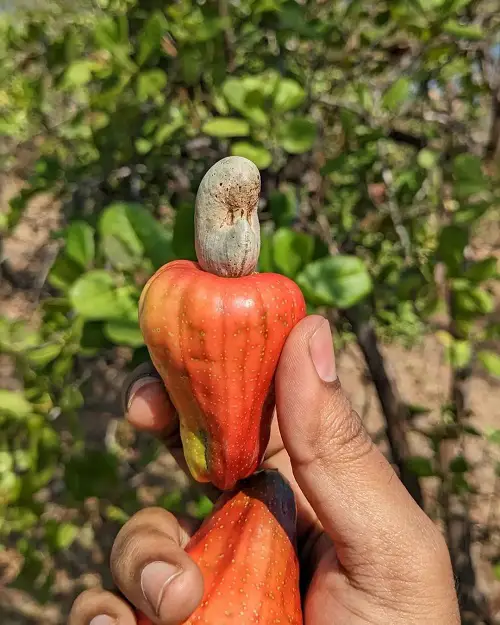
The cashew fruit is a highly nutritious food that contains a significant amount of vitamins A, B, C and essential minerals like selenium, magnesium, copper, iron, phosphorous, zinc, and fatty acids.
Interestingly, the raw cashew nut represents only 10% of the cashew fruit, while the remaining 90% constitutes the cashew apple, which contains 91.4% water and 7.3% carbohydrates, as well as 0.18% protein and 0.05% fat.
Can You Eat a Cashew Fruit?
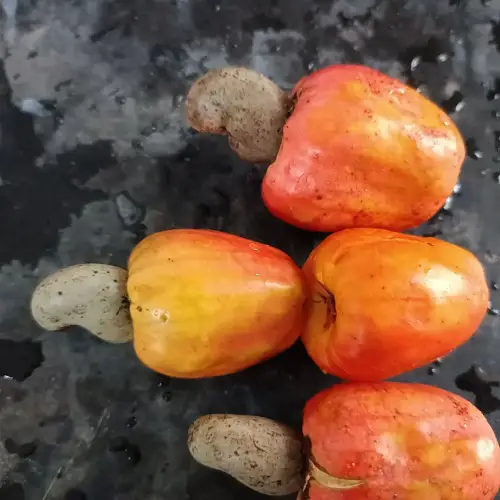
So, Can You Eat a Cashew Fruit? Yes, cashew fruit is safe to eat, and the fruit pulp is commonly consumed in many tropical countries, especially in South America, Africa, and Asia.
However, it is important to note that the fruit should be eaten when it is ripe, as the unripe fruit and skin contain a toxic substance called urushiol, which can cause skin irritation and allergic reactions in some people.
What Do Cashew Apples Taste Like?
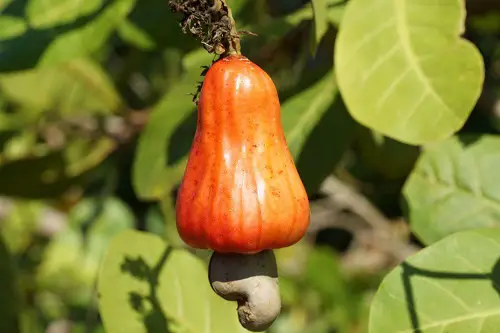
With its waxy skin and crisp, watery texture reminiscent of bell peppers, the cashew fruit boasts a unique flavor profile that is both sweet and slightly astringent.
The flesh of the fruit is fibrous and cottony, often yellow or orange, with a juicy pulp that is both sweet and slightly dry. Many people opt to extract the juice by chewing on the fruit and discarding the tough, stringy flesh.
How to Eat Cashew Fruit?
Cashew fruit can be eaten fresh or used in various culinary applications, such as juices, jams, jellies, and desserts. The fruit pulp can also be fermented into an alcoholic beverage called feni, which is popular in Goa, India. To eat the fruit, simply wash it, remove the skin, and savor the pulp.
Benefits of Eating Cashew Fruit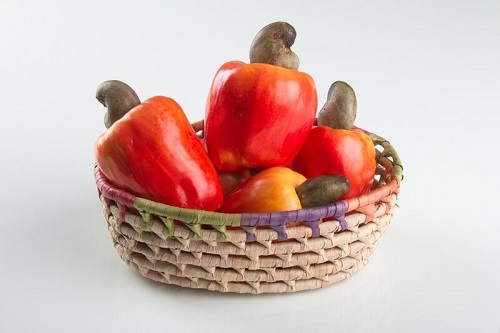
The cashew fruit offers a plethora of nutritional benefits as it is a rich source of essential vitamins and minerals like Vitamin C, Vitamin B, calcium, iron, magnesium, and zinc.
Furthermore, it contains a substantial amount of antioxidants that safeguard the body from cellular damage and mitigate the risk of certain illnesses. Consumption of cashew fruit may also aid in enhancing immunity, promoting digestion, and reducing inflammation, making it an excellent choice to include in a healthy diet.


